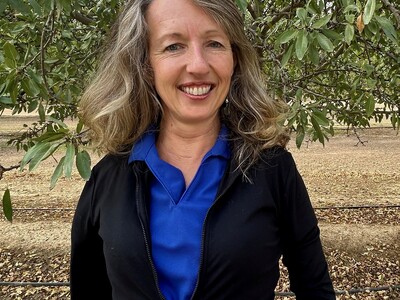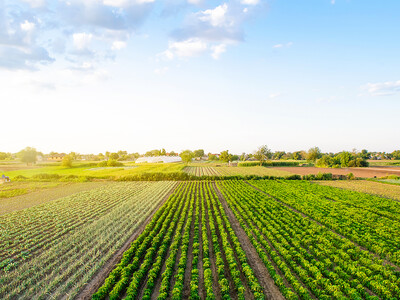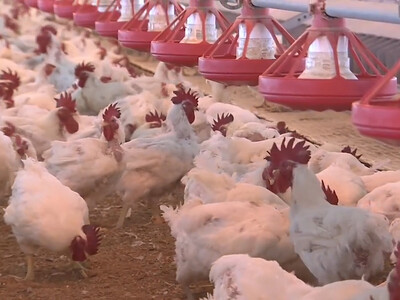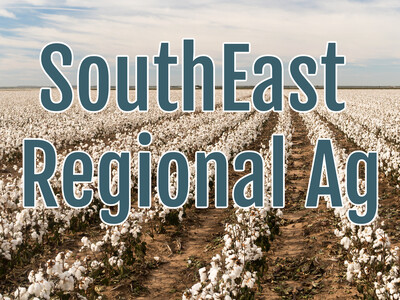ESPA Re-charge
Gary Spackman, long-time Director of the Idaho Department of Water Resources, complimented the Idaho Water Resource Board and its staff for making significant strides toward meeting the annual target of recharging an average of 250,000 acre-feet of water into the Eastern Snake Plain Aquifer (ESPA) on an ongoing basis.The Board has met or exceeded that goal in the last three winters.
Spackman shared his thoughts about the ESPA managed recharge program in a speech to the Idaho Water Users Association. “I think this year is a year of celebration of what the Board has accomplished,” Spackman told the Board. “I’m impressed with how you have built the capacity to divert the water, and the redundancy that you’re building into the system. That’s absolutely critical.”
In December, the Board submitted a 10-year progress report on ESPA recovery and sustainability efforts to House Speaker Scott Bedke, which includes information about the Board’s recharge program and initiatives by groundwater users and other stakeholders. As a result of these initiatives, the volume of the ESPA has increased by about 1.8 million acre-feet, based on measurements of 300-plus groundwater monitoring wells in 2019.
The progress report documents increased groundwater levels are a result of the combined efforts of the state and the water users, including 5-6 years of capacity-buildout of the Board’s recharge program, ongoing funding support from the Idaho Legislature, as well as the significant initiatives from the historic water settlement between Snake River surface water users and groundwater users, which resulted in a 13 percent reduction in groundwater use across the ESPA or 240,000 acre-feet of water per year. Build-out of a comprehensive cloud- seeding program supported by Idaho Power Company, the Board, and the water users as well as a robust snowpack and streamflow runoff over the past several years also contributed to improved conditions in the ESPA, officials said.
“It’s a remarkable accomplishment,” Spackman said.
In the board meeting, Wesley Hipke, Recharge Program Manager, said the board has recharged about 89,000 acre-feet of water into the ESPA so far this year. Under the board’s water rights for ESPA recharge, it is diverting about 670 cubic feet per second in the Magic Valley region to recharge the aquifer, Hipke said. The board has about 1,000 cfs of capacity in the region, but the Bureau of Reclamation is holding back additional water flows in upstream reservoirs until it has a better sense of how much water will be released for flood- control, officials said.
In other action, the Board received a preliminary report from consultant Brown and Caldwell about the potential for managed aquifer recharge in the Treasure Valley. The Board commissioned the Treasure Valley Managed Recharge Feasibility Study to seek additional ways to prepare for rapid population growth and future water demand in the Treasure Valley. The population in the Treasure Valley is expected to increase to 1.5 million by 2065. Future demand for Domestic, Commercial, Municipal and Industrial water uses is expected to increase by about 158,000 acre-feet over that time period.
The study included an analysis of available water supply for recharge from the Boise, Payette, and Snake Rivers. Brown and Caldwell's representatives concluded that surplus water is available during spring runoff for aquifer recharge. An average of 1.1 million acre-feet of surplus surface water leaves the Boise River Basin in the spring during high water flows. A portion of that water could be recharged into Treasure Valley aquifers, officials said.
The study also documented areas across the Treasure Valley that are physically conducive or not conducive for recharging water into the aquifer. Brown and Caldwell's representatives said this information can be used by water managers to select potential recharge locations and identify options for diverting surplus water from the river to recharge sites via an injection well or infiltration basin.
In 2016, the Board commissioned a five-year project to develop a Treasure Valley Ground-Water Flow Model in partnership with the U.S. Geological Survey. The purpose of that project is to learn more detail about the Treasure Valley shallow and deep aquifers and how groundwater flows beneath the valley.
Results from the Treasure Valley Ground-Water Flow Model will be used to update the findings of the recharge study to help the Board and other water user entities determine whether a recharge is an option to address specific water management issues in the Treasure Valley, officials said. For more information on Treasure Valley aquifer studies, go to https://idwr.idaho.gov/water-data/projects/treasure-valley/.













